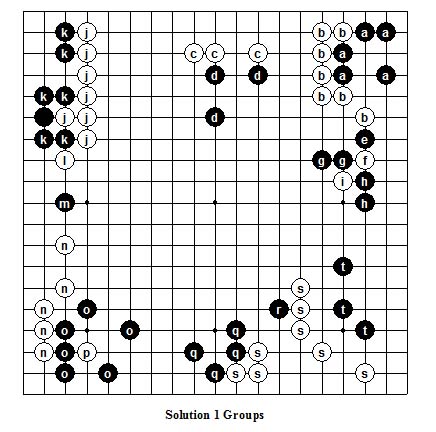
a: Unimportant, although live, and takes a small corner territory, because it’s enclosed and therefore can’t influence subsequent play.
b: Very important when formed, because the wall projected its influence over the entire upper middle of the board Much less important now that the Black “d” stones have been played specifically to negate that influence.
c: Somewhat important because they prevent the “d” stones from making a base on the edge, but not very important because those same Black “d” stones effectively cut them off from the center.
d: Vitally Important! These stones prevent White from making a massive, winning territory between his two powerful (b and J) walls on either side!
e: Important because it helps capture W“f”, and thereby unites the B“g” and “h” units.
f: Important, as just noted.
g: Moderately important because they reach out toward the center and therefore potentially aid the vital but still unsettled B“d” stones.
h: Moderately important because they will almost certainly connect to the B “t” stones below to secure a large Black territory on the edge.
i: Almost worthless! If capturing this stone was the only way that Black could connect his “g” and “h” stones, it would be at least moderately important. But given that Black can also connect by capturing W”f” (which is already in atari!), the importance of W”I” sinks to just the 2 points that its capture would bring.
j: Fairly important, because they form a thick, powerful wall which casts its influence over the entire upper left middle! But not really important because that influence is already partially negated by the Black “d” group.